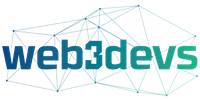
Newsletter #231: Endurance
This week’s featured collector is Krampusco
Krampusco has an NFT collection ranging from the well-known to the creative spoof. Check it out at lazy.com/krampusco
Last week’s poll asked why digital art and NFTs keep viewers engaged longer than traditional art. The majority pointed to interactive or moving elements (40%), followed by immersive visuals and sound (30%), while smaller groups highlighted younger audiences’ preferences (20%) and the novelty of the medium (10%). Interestingly, no one credited museums’ presentation. This suggests that digital art’s power lies less in how it’s framed and more in the medium itself—its ability to move, react, and surround viewers. Unlike static works, digital art offers a dynamic encounter that unfolds over time, and that durational quality may be the very thing that secures its place in the future of art.
Data, Durability, and the Future of NFTs
Part of what gives art its mystique—and its value—is its endurance. Compared with the brevity of human lives, art often outlives us, standing as an anchor of cultural memory. Ownership of a painting implies this promise of longevity: you might sell it, gift it, or leave it behind, but you assume the work itself will persist.
But what happens when art does not endure? What if, instead of centuries, a piece is doomed to fade, glitch, or rot in a matter of years? This fragility has haunted new media art from the start. The screens, code, and hardware that bring these works to life are also the things that risk consigning them to obsolescence.
A Radical Experiment in Preservation
Kelani Nichole, a pioneering dealer in new media art, is trying to solve this dilemma. At an event during this year’s Armory Show, she launched the Transfer Data Trust, a cooperative designed to make digital art “last 100 years.”
Nichole’s path here has been deliberate. Since founding Transfer Art Gallery in 2013, she has championed artists such as Rosa Menkman, Lorna Mills, and Carla Gannis. But as her interests shifted toward decentralization—both as a political stance and a technical toolkit—she transformed her gallery into a cooperative. The Transfer Data Trust replaces the fragile LLC with a member-run system built around long-term preservation.
Her skepticism toward NFTs shaped this move. During the NFT boom, Nichole called them “glorified receipts,” skeptical that they solved the central problem of digital art: permanence. “What it means for a painting to last through time is different from, say, a video game,” she explained at the launch. “The permanence of mutable objects is possible if we make sure we can preserve the intent of the artist.”
Beyond Storage: Preserving Intent
For new media works, survival is not just about backing up files. It’s about preserving the experience the artist intended, even as technologies change. Imagine a century from now when “screens” themselves may be obsolete. Simply migrating files forward won’t ensure that the art retains its essence. That requires extensive documentation of how the work was meant to function and be seen—and safeguards to ensure that documentation endures.
The Data Trust builds these safeguards into its structure. It combines decentralized storage systems like IPFS and Filecoin with traditional networked drives, wrapped in a browser interface where artists, dealers, and conservators can track inventory, market activity, and conservation status. Proceeds from sales flow back into the cooperative, which collectively decides how to allocate funds—including conservation of fragile works.
Art, Data, and Unsouping the Future
What makes the Data Trust fascinating is its insistence that art is not just “data in disguise,” but a form of data worthy of care, distinction, and stewardship. During the NFT frenzy, digital artifacts were often valued without clarity about why they mattered. Their shock value—much like Duchamp’s urinal or Warhol’s soup cans—was that they forced us to accept inexplicable value where none seemed to belong.
But as theorist Lisa Nakamura once wrote, digital images were long treated as “an undifferentiated soup of bits and bytes,” impossible to analyze through traditional art-historical frameworks. What efforts like the Data Trust reveal is a process of unsouping—differentiating data, preserving it, and investing it with the same weight once reserved for canvas and bronze.
Why It Matters
A recent Project Liberty Institute report on data cooperatives observed that fine art is one of the few markets outside finance capable of assigning value to data—especially time-based media artworks. Nichole’s project poses a radical question: can we take back the value of data from Big Tech, establishing systems where people transact in data on their own terms, rather than watching corporations scrape it and sell it? If data is valuable, then art—an especially charged form of data—may offer the template for doing so.
The challenge, of course, is permanence. Stewardship across generations is painstaking, as anyone who has tried to recover photos from a dead hard drive knows. Our parents’ photo albums survive in closets; our own digital archives risk being lost in forgotten cloud accounts. For art to endure, it requires dedicated care, expertise, and systems built for the long haul.
Toward the Deep Future
Nichole’s Transfer Data Trust represents a shift: from short-term speculation toward the long-term labor of preserving NFTs. Not every work of art, nor every NFT, will be carried into the deep future, but those that are will be the ones entrusted to systems of care and collective responsibility. In this sense, the Data Trust reframes digital art as not just another speculative asset class but as cultural memory worth safeguarding.
Learn more at ArtNews.
How should NFTs be safeguarded to last 100 years?
We ❤️ Feedback
We would love to hear from you as we continue to build out new features for Lazy! Love the site? Have an idea on how we can improve it? Drop us a line at info@lazy.com
























